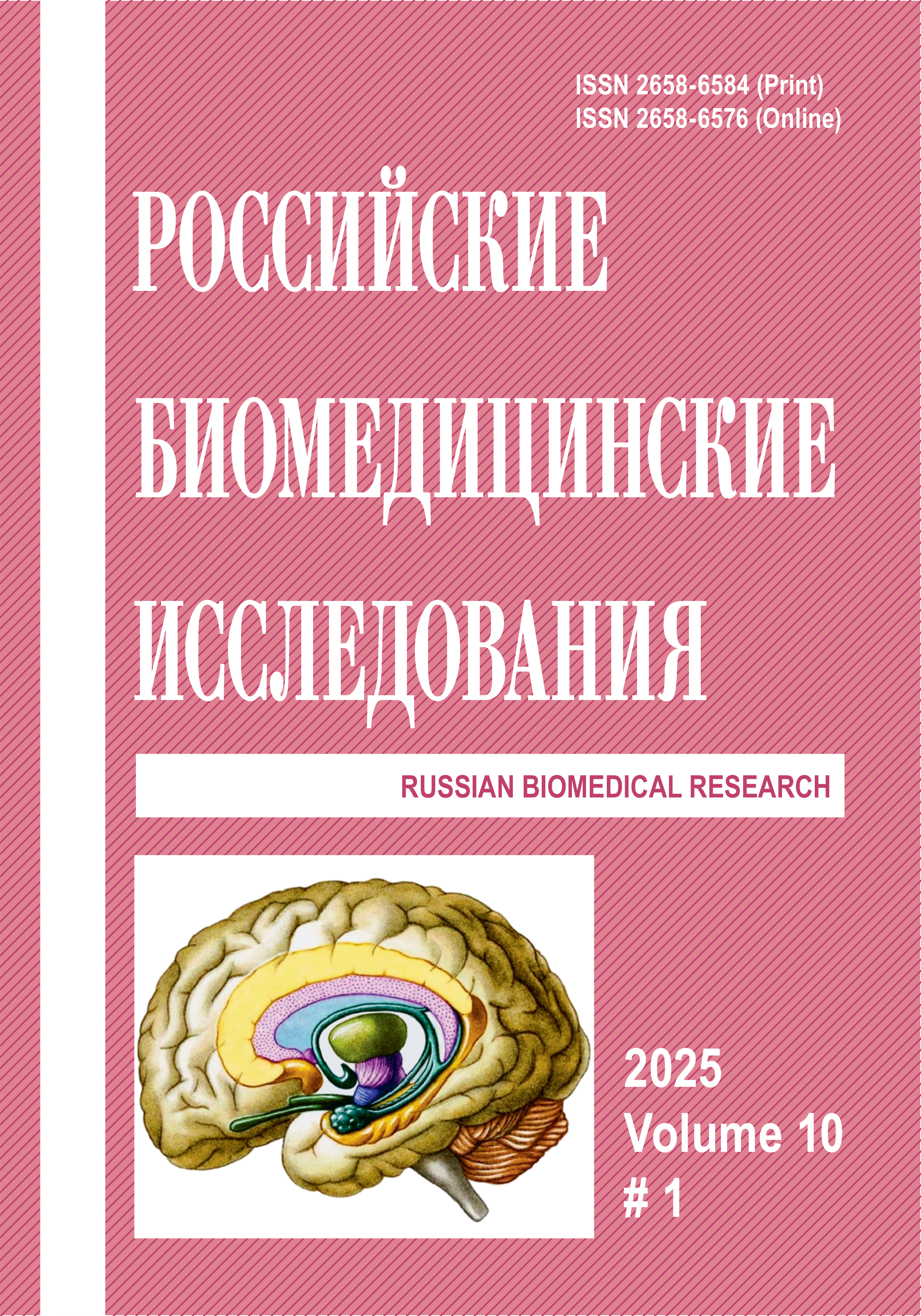ASSESSMENT OF HEMODYNAMIC STATUS IN ANIMALS WITH BURN SHOCK AND PROLONGED TISSUE COMPRESSION SYNDROME AGAINST THE BACKGROUND OF ANTIHYPOXANT APPLICATION
Abstract
Introduction. Burn disease and compartment syndrome, despite differences in etiological factors, have similar pathogenesis links that determine the severity of the patient’s condition and high mortality rates. In this regard, the study of their mutual aggravation and possible ways to correct developing disorders is relevant. Purpose of the study — to study the functional state of the cardiovascular system in animals with burn disease and compartment syndrome against the background of the use of antihypoxants. Materials and methods of the study. The study included 180 small laboratory animals (rats), which modeled extensive deep skin burns and compartment syndrome. All rodents were divided into three equal groups taking into account the composition of infusion therapy: saline (0.9% NaCl), antihypoxants mufasol and polyoxyfumarin. In the course of the work, stroke volume and minute blood volume, as well as the effectiveness of succinate dehydrogenase, were studied. Statistical data processing was performed using generally accepted methods of variation statistics. The alternative hypothesis was accepted at p <0.05. Research results and discussion. It was found that when using polyoxyfumarin, the stroke volume and minute blood volume were higher by 25% (p <0.05) and 21.4% (p <0.05) relative to the use of mufasol and by 67% (p <0.05) and 40% (p <0.05) relative to the introduction of sodium chloride. The use of the Parkland formula + 40% made it possible to increase the overall effectiveness of infusion therapy by 39% regardless of its composition. The effect of polyoxyfumarin and mufasol on the activity of succinate dehydrogenase was established. On the second day after the injury, the analyzed indicator was 32.1 and 34.2, respectively, which is 54.7% (p <0.05) and 71.4% (p <0.05) relative to the introduction of sodium chloride. Conclusion. The use of antihypoxants as part of anti-shock infusion therapy for extensive burns and prolonged tissue compression syndrome improves the condition of the cardiovascular system and myocardium.
References
Ковальчук-Болбатун Т.В., Стасевич Д.Д. Термический ожог кожи у беременных (обзор литературы). Вестник Витебского государственного медицинского университета. 2024;23(1):9–14.
Семиглазов А.В., Зиновьев Е.В., Костяков Д.В., Гогохия Т.З., Крылов П.К., Костякова А.В., Васильева А.Г. Патогенетическое обоснование оптимальной тактики ведения пограничных ожоговых ран. Medline.ru. Российский биомедицинский журнал. 2023;24(2):1296–1307.
Перетягин С.П., Стручков А.А., Костина О.В., Мартусевич А.К., Погодин И.Е., Соловьева А.Г., Перетягин П.В., Лузан А.С. Озонотерапия как дополнительный метод в комплексном лечении ожоговой болезни. Биорадикалы и антиоксиданты. 2022;9(1-2):18–34.
Кабартиева Ю.А., Моллаева А.М. Обзор литературы: Иммунопатогенез синдрома длительного сдавления. Современная наука: актуальные проблемы теории и практики. Серия: Естественные и технические науки. 2021;3:270–272.
Завсеголов Н.И., Бондаренко А.В., Плотников И.А., Коломиец А.А.. Клинические и эпидемиологические аспекты комбинированных травм. Политравма. 2024;1:20–26.
Савченко С.В., Ощепкова Н.Г., Новоселов В.П., Бгатова Н.П., Кузнецов Е.В., Летягин А.Ю. Ультраструктура кардиомиоцитов при тяжелом ожоговом шоке. Современные проблемы науки и образования. 2021;2:130–130.
Садулаев Д.Ш., Гурская О.Е., Фатеев И.В., Цыган В.Н., Барсукова И.М., Дубикайтис П.А., Лемещенко А.В., Макаров А.Б. Влияние цитофлавина на этиологическую структуру и частоту развития бактериемии у пострадавших с тяжелой сочетанной травмой. Забайкальский медицинский вестник. 2024;2:110–118.
Copyright (c) 2025 Russian Biomedical Research

This work is licensed under a Creative Commons Attribution 4.0 International License.



